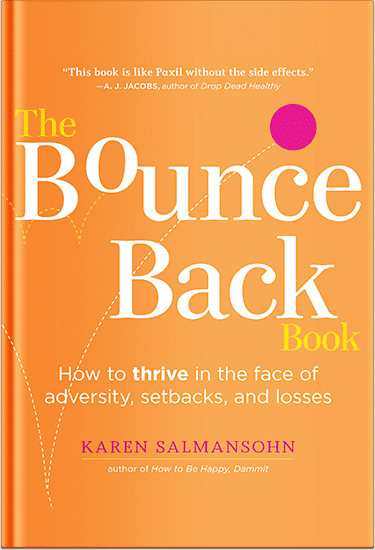 As the healthcare landscape evolves, medical cabinets and clinics must adapt to emerging trends to meet the diverse needs of patients. In 2023, several significant trends are shaping the industry.
As the healthcare landscape evolves, medical cabinets and clinics must adapt to emerging trends to meet the diverse needs of patients. In 2023, several significant trends are shaping the industry.
Understanding and embracing these changes can lead to improved patient experiences and outcomes.
I’m here to help to explain it all to you.
As you might know, I am a bestselling personal development author.
Plus I created an online program called The Anxiety Cure to help people to stay calm during stressful times.
I love sharing insights and strategies to empower people to be happy and successful. (I even offer private coaching!)
This article explores a holistic approach to patient care focusing on medical cabinets in 2023. In today’s world establishments should both improve their services and create a patient-centric environment.
Addressing the increase of chronic illnesses in the USA
The United States is experiencing a significant rise in chronic illnesses, such as diabetes, heart disease, and obesity.
For example, in the USA only, over 40% of American adults and 17% of children are obese as of the latest CDC figures.
Specialists truly talk about a pandemic illness that not only affects the population. It also can contribute to the development of some cancers, cardiovascular diseases, and other serious medical conditions.
Healthcare establishments must recognize this alarming trend and prioritize delivering services and support to provide relief for chronic patients. In many cases, chronic illnesses have no cure. Yet there are many preventative measures available to control it and stop it from getting worse. It becomes essential for medical workers to provide guidance to chronic patients and help them find a place where they can manage their condition. Specialized programs, such as lifestyle interventions and disease management, can ensure medical cabinets can help patients improve their quality of life. Plus it can reduce the burden on the healthcare system.
Harnessing the power of organic search for patients
Did you know that organic search ranks among the top 10 healthcare marketing trends in 2023? In the digital age, patients increasingly rely on online searches to find healthcare providers and information. Medical establishments should focus on enhancing their online presence and optimizing their websites for organic search results.
Utilizing search engine optimization (SEO) best practices, including keyword research, content creation, and mobile optimization, is no novelty. Yet, while other industry sectors have been incorporating SEO techniques for several years into their strategies, medical cabinets have been late to join the SEO game.
Here’s why need to put SEO back on your to-do list:
- You have competitors
- Patients are willing to commute to meet a doctor they can trust
- It can attract more investments
- It will help propel your reputation further
- It can also drive additional partnerships and sponsoring that can benefit your business
Utilizing interior decor to creating a healing environment
Everybody knows the importance of interior design in creating a soothing space. But, there is no reason why interior design techniques must be limited to the residential sector. In fact, the ambiance within your medical practice plays a crucial role in patient experiences. The traditional white walls and corridors belong to the past. Nowadays, medical practices are transforming from the sterile decor in favor of bright colors, showcasing artistic and stylish design.
An attractive decor contributes to reducing boredom and low morale, both among your team and your patients. More importantly, innovative designs are creating spacious layouts, featuring essential entertainment areas for children and waiting patients. As surprising as it might sound, the addition of a specifically designated play space doesn’t increase noise complaints. It can actually reduce sound pollution inside your practice and create a more relaxing environment.
You would be surprised to discover as well that your decor will also influence the level of trust patients have in your medical services. A thoughtful interior decor can create a calming and welcoming atmosphere, alleviating anxiety and stress for patients. Utilizing soothing colors, comfortable furniture, and nature-inspired elements can contribute to a healing environment.
Simplifying communication for immigrant patients
The United States has a diverse population, including a significant number of immigrants who may face language barriers when seeking medical care. These language barriers can manifest themselves in different ways:
- The patient doesn’t speak a word of English and requires language interpretation services
- The patient has some basic English skills and may be able to drive attention to their core issue(s). However, they may struggle to understand complex phrasing or vocabulary and can miss out on crucial aspects of their medical treatment.
- The patient has a high level of fluency but they may not be familiar with medical terms and may not know how to best describe their medical condition.
- The is fully fluent, or even a native speaker, but has very little experience of the medical environment and struggles to associate commonly used medical terms with their personal experience.
Contrary to common belief, the failure to communicate effectively is not necessarily related to a patient’s native language. Patients who have little to no experience of seeing a doctor may be confused as to how to describe pain or discomfort. They may even be tempted to ignore some level of discomfort if their upbringing has never focused on expressing their needs.
Therefore, doctors and nurses must learn to embrace multiple communication tools and trends, such as utilizing emojis or visual aids to bridge the many language gaps that exist in this profession.
Creating an inclusive environment for minority patients
 Building trust and inclusiveness is paramount for medical practices, particularly among minority populations, such as the Hispanic/Latino and Black communities who have historically faced healthcare disparities and discrimination.
Building trust and inclusiveness is paramount for medical practices, particularly among minority populations, such as the Hispanic/Latino and Black communities who have historically faced healthcare disparities and discrimination.
It is a tough task to embrace minority communities as part of your communication and practices, especially because many healthcare establishments don’t know how to make their inclusive best practices visible. Efforts can be made to create a welcoming and culturally relevant environment through your decor and recruitment strategies, employing diverse staff members in diverse positions and engaging with community organizations to understand their specific needs and concerns.
By fostering trust and addressing cultural sensitivities, medical practices can ensure equitable care for all patients
Establishing an LGBTQ-friendly environment
As societal acceptance grows, the LGBTQA+ community seeks healthcare providers who understand their unique health needs and challenges. Medical practices must strive to become openly LGBT friendly, ensuring their staff members are trained to provide inclusive care and are knowledgeable about specific health issues. From gender-affirming policies to partnering with LGBTQ community organizations, healthcare practices can foster trust and improve health income for their patients.
In conclusion, medical cabinets need to embrace these key trends in 2023 to deliver high-quality, patient-centric care. These are at the core of fostering positive experience, improving patient outcomes, and contributing to the overall well-being of their communities.
Stay Calm During Challenging Times
Explore my therapist recommended online program called The Anxiety Cure to learn how to stay calm – no matter the chaos you’re dealing with!
P.S. Before you zip off to your next Internet pit stop, check out these 2 game changers below - that could dramatically upscale your life.
1. Check Out My Book On Enjoying A Well-Lived Life: It’s called "Your To Die For Life: How to Maximize Joy and Minimize Regret Before Your Time Runs Out." Think of it as your life’s manual to cranking up the volume on joy, meaning, and connection. Learn more here.
2. Life Review Therapy - What if you could get a clear picture of where you are versus where you want to be, and find out exactly why you’re not there yet? That’s what Life Review Therapy is all about.. If you’re serious about transforming your life, let’s talk. Learn more HERE.
Think happier. Think calmer.
Think about subscribing for free weekly tools here.
No SPAM, ever! Read the Privacy Policy for more information.
One last step!
Please go to your inbox and click the confirmation link we just emailed you so you can start to get your free weekly NotSalmon Happiness Tools! Plus, you’ll immediately receive a chunklette of Karen’s bestselling Bounce Back Book!


 As the healthcare landscape evolves, medical cabinets and clinics must adapt to emerging trends to meet the diverse needs of patients. In 2023, several significant trends are shaping the industry.
As the healthcare landscape evolves, medical cabinets and clinics must adapt to emerging trends to meet the diverse needs of patients. In 2023, several significant trends are shaping the industry.  Building trust and inclusiveness is paramount for medical practices, particularly among minority populations, such as the Hispanic/Latino and Black communities who have historically faced healthcare disparities and discrimination.
Building trust and inclusiveness is paramount for medical practices, particularly among minority populations, such as the Hispanic/Latino and Black communities who have historically faced healthcare disparities and discrimination. 